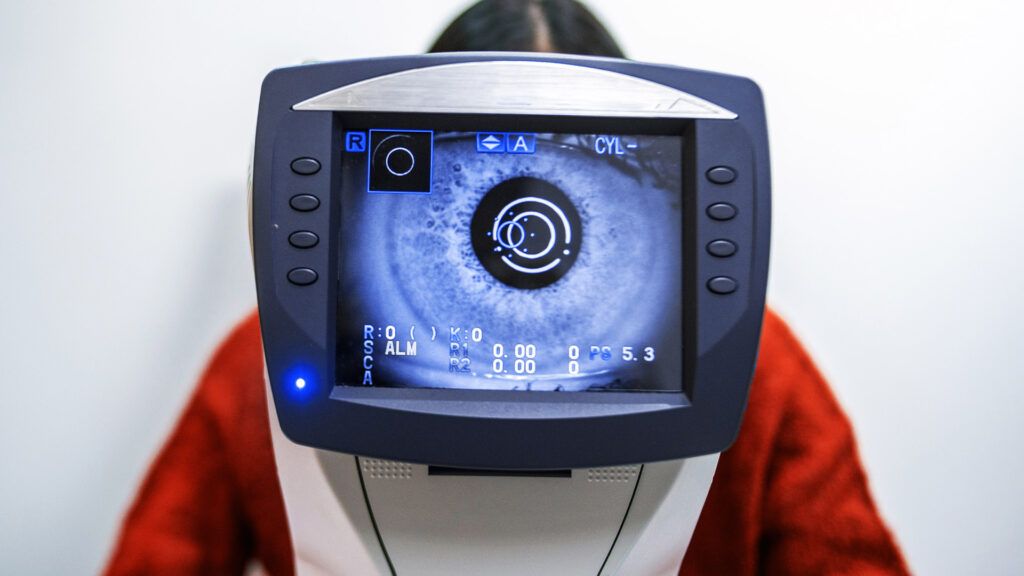A glaucoma test is a complete eye exam that checks vision, eye health, and optic nerve health.
Glaucoma is an eye disease that damages the optic nerve. A complete eye exam can diagnose this condition.
This article explores tests people may have to check for glaucoma, what test results may mean, and when a person may require testing.
Eye health resources
Visit our dedicated hub for more research-backed information and in-depth resources on eye health.

A glaucoma test is a complete eye exam that looks at various features of the eye to check for signs of glaucoma.
During this exam, an eye doctor will carry out the following types of tests:
- Tonometry: A test to measure eye pressure.
- Pachymetry: This test measures the thickness of the cornea, which is a portion of the outer layer of the eye. Having thinner corneas increases the risk of glaucoma.
- Visual acuity: This measures how well people can see by asking them to read letters on a screen.
- Ophthalmoscopy: This method examines the back of the eye to check the health of the retina and optic nerves.
- Perimetry: The test measures how well people can see with their peripheral and central vision.
- Gonioscopy: This examines how well fluid is draining out of the eye.
These tests allow an eye doctor to examine eye health and vision thoroughly. Glaucoma tests are the only method for diagnosing this eye condition.
People may need a glaucoma test if they have an increased risk of glaucoma.
This includes people who:
- have a family history of glaucoma
- are older than 40 years
- have African, Asian, or Hispanic heritage
- have high eye pressure
- have had an eye injury
- are farsighted or nearsighted
- have long-term use of steroids
- have thinning of the optic nerve or corneas
- have diabetes
- experience migraine attacks
- have high blood pressure, circulation issues, or other health conditions affecting the whole body
If people have one or more risk factors, they can talk with an eye doctor about undergoing glaucoma tests. Those with an increased risk of glaucoma may require testing every
People will also need a glaucoma test if they have any symptoms, such as vision loss. Vision loss
A comprehensive eye exam for glaucoma may involve the following:
- discussing a person’s medical history, overall health, and any symptoms they may have
- a visual acuity test, in which people have to read letters on charts at varying distances
- an eye pressure test,
in which an eye doctor uses a machine called a tonometer to measure the pressure inside the eye - an eye doctor using a probe to gently touch the eye and measure how thick the cornea is
- a field of vision test, where an eye doctor will check how well people can see objects to their side without moving the eyes
- using specialized eye drops to dilate the pupil of the eye, which allows eye doctors to examine eye health better using microscopes and lenses
- a gonioscopy, in which a doctor will place a specialized lens on the eye to view how well fluid can drain from the eye
Who performs a glaucoma test?
An ophthalmologist will carry out a glaucoma test. An ophthalmologist is a medical doctor who specializes in diagnosing and treating eye diseases.
After having a glaucoma test, people may experience some temporary side effects, such as sensitivity to light.
These may last for
Eye exams for glaucoma
Eye tests that involve dilating the eye can also cause temporary blurred vision. Therefore, it is important to avoid any activities following the exam that require clear sight, such as driving.
Test results that may indicate a person has glaucoma include:
- eye pressure that is higher than expected
- blind spots in the field of vision
- optic nerve damage
An ophthalmologist will discuss a person’s test results with them and explain what they mean. They will be able to discuss glaucoma risk factors and answer questions.
If test results show a risk of developing glaucoma, people may need more regular eye exams to monitor eye health.
If people have glaucoma, treatment may include:
- medicated eye drops to reduce eye pressure
- surgery or laser surgery to help with fluid drainage
- regular check-ups around every 3–6 months
This section answers some common questions about glaucoma tests.
What is the most common test for glaucoma?
According to the American Academy of Ophthalmology (AAO), a complete eye exam is the only definite way of diagnosing glaucoma.
Screenings that only check eye pressure are not sufficient in diagnosing glaucoma.
How can I test for glaucoma at home?
According to a small-scale 2020 study, testing the vision field regularly at home may be useful for certain people with glaucoma and may help prevent vision loss.
People can consult an ophthalmologist to see whether testing at home could be an option for them.
The AAO advises that the best method of testing the eyes is through a thorough eye exam with a healthcare professional.
People will need a complete eye exam with an ophthalmologist to diagnose glaucoma.
To diagnose glaucoma, doctors use a range of tests to check vision and eye health for signs of the disease.
If people have any symptoms or risk factors for glaucoma, it is important to attend a glaucoma test and regular eye exams.
